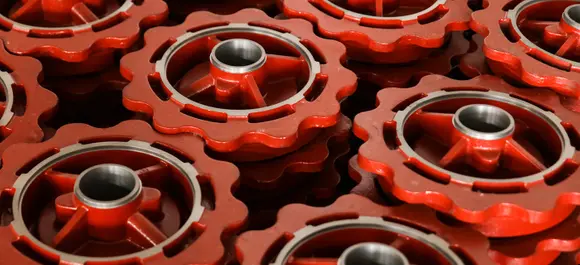Mobile:+86-311-808-126-83
Email:info@ydcastings.com
English
Understanding the Role of Impellers in Centrifugal Compressors for Enhanced Performance
The Role of the Impeller in Centrifugal Compressors
Centrifugal compressors are essential components in various industries, including power generation, petrochemical processing, and HVAC systems. They operate on the principle of converting kinetic energy into pressure energy through the dynamic action of a rotating impeller. Among the key components of a centrifugal compressor, the impeller plays a pivotal role in its efficiency and performance.
Structure and Function of the Impeller
The impeller in a centrifugal compressor is typically a rotating disk equipped with blades that extend outward from its center. As the impeller spins, it draws in gas through an inlet and accelerates it radially outward due to centrifugal forces. This process not only increases the velocity of the gas but also converts kinetic energy into potential energy, raising its pressure as it exits the impeller.
The design and geometry of the impeller blades are crucial for optimizing performance. Blade angle, thickness, and the number of blades all affect the compressor's efficiency and flow capacity. In general, a well-designed impeller should minimize losses due to turbulence while maximizing the energy transfer from the rotating impeller to the working fluid.
Types of Impellers
There are several types of impellers used in centrifugal compressors, including closed, semi-closed, and open impellers. Closed impellers feature blades that are enclosed on both sides, providing better efficiency and more stable flow characteristics. Semi-closed impellers, which possess a single shroud on one side, strike a balance between performance and ease of manufacturing. Open impellers lack shrouds altogether, offering simpler designs at the cost of efficiency and stability.
In specific applications, impellers may also be categorized based on their performance curves and their ability to operate in different ranges of pressure and flow rates. The selection of an appropriate impeller type is determined by the requirements of the application and the overall design goals of the compressor system.
impeller in centrifugal compressor

Performance Factors
The performance of a centrifugal compressor is heavily influenced by the design of its impeller. Key performance indicators such as efficiency, pressure ratio, and flow capacity all hinge on the impeller's characteristics. Specifically, the impeller's rotational speed, inlet size, and blade configuration directly impact the compressor's ability to generate pressure and handle varying flows.
Additionally, advancements in computational fluid dynamics (CFD) tools have enabled engineers to optimize impeller designs for better performance. By simulating airflow patterns and analyzing pressure distributions, engineers can refine blade shapes and angles to reduce losses and improve overall efficiency.
Challenges and Innovations
Despite the advances in impeller design, challenges remain. Issues such as surge, stall, and vibrations can affect compressor performance and reliability. Surge occurs when there is a significant drop in flow, causing instability and potential damage to the compressor. To mitigate these issues, technologies such as variable geometry and active control systems have been developed, allowing for real-time adjustments in discrete operating conditions.
Moreover, the use of advanced materials in impeller fabrication has led to innovations that improve durability and resistance to wear and corrosion. These advancements not only extend the lifespan of the components but also allow for higher operational efficiencies and reduced maintenance costs.
Conclusion
The impeller is a vital part of a centrifugal compressor, playing a crucial role in determining its performance and efficiency. As industries continue to demand more effective and reliable compression solutions, ongoing research and development in impeller design and material technology will undoubtedly shape the future of centrifugal compressors. Understanding the complexities of impeller design is essential for engineers striving to optimize compressor systems, ensuring they meet the ever-evolving needs of various applications.
-
Premium Fan Housing & Motor Casing for Optimal AirflowNewsAug.31,2025
-
High-Performance Automobile Water Pump & Electric SolutionsNewsAug.30,2025
-
Expert Stainless Steel Casting | Precision & Durable Metal PartsNewsAug.29,2025
-
Precision Metal Castings: Aluminum, Stainless Steel & Die CastingNewsAug.28,2025
-
Superior Aluminum Castings in Automotive Engine PartsNewsAug.22,2025
-
Common Materials Used in Fan Housing ManufacturingNewsAug.22,2025











